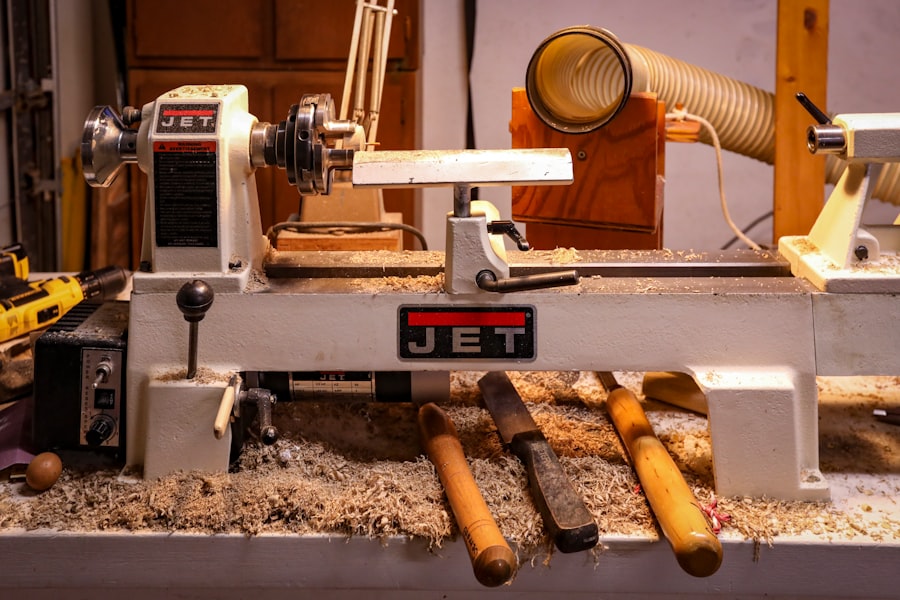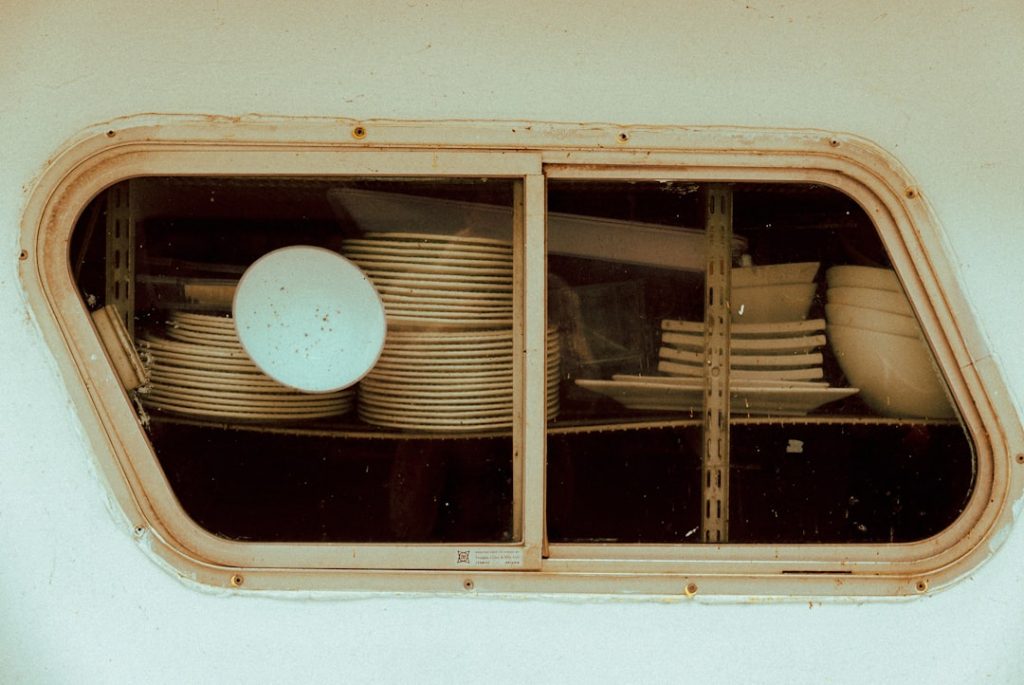Custom cabinets serve as more than mere storage solutions; they are integral components of a home’s aesthetic and functional design. Unlike mass-produced cabinetry, which often sacrifices quality for cost-effectiveness, custom cabinets are tailored to meet the specific needs and preferences of the homeowner. This personalization allows for a unique expression of style, ensuring that the cabinetry complements the overall design theme of the space.
Whether it’s a modern kitchen, a rustic living room, or a sophisticated office, custom cabinets can enhance the visual appeal and functionality of any area. Moreover, custom cabinets can significantly increase the value of a home. Potential buyers often look for unique features that set a property apart from others on the market.
High-quality, custom cabinetry can be a major selling point, showcasing craftsmanship and attention to detail that is often absent in standard options. Additionally, custom cabinets can be designed to maximize storage efficiency, making them not only beautiful but also practical. This combination of aesthetics and functionality makes custom cabinets an investment that pays dividends in both enjoyment and resale value.
Key Takeaways
- Custom cabinets enhance both the functionality and aesthetic of your space.
- Choosing the appropriate wood type is crucial for durability and style.
- Precise design ensures cabinets fit perfectly and meet your storage needs.
- Skilled joinery and finishing techniques contribute to the quality and longevity of cabinets.
- Regular maintenance preserves the beauty and functionality of custom cabinetry.
Selecting the Right Wood for Your Custom Cabinets
Choosing the right wood for custom cabinets is a critical decision that impacts both the appearance and durability of the final product. Different types of wood offer varying characteristics in terms of grain patterns, color, and hardness. For instance, hardwoods such as oak, maple, and cherry are popular choices due to their strength and resistance to wear.
Oak, with its prominent grain and durability, is often favored for traditional designs, while maple provides a smoother finish that suits contemporary aesthetics. Cherry wood, known for its rich color that deepens over time, adds a touch of elegance to any space. In addition to aesthetics, the choice of wood also affects the cabinet’s longevity and maintenance requirements.
Softwoods like pine may be more affordable but are generally less durable than hardwoods. They can dent and scratch more easily, which may not be ideal for high-traffic areas like kitchens. Furthermore, environmental considerations are becoming increasingly important in wood selection.
Sourcing sustainably harvested wood not only supports responsible forestry practices but also appeals to eco-conscious consumers. By choosing materials that are both beautiful and sustainable, homeowners can create custom cabinets that reflect their values while enhancing their living spaces.
Designing Custom Cabinets to Fit Your Space

The design process for custom cabinets begins with a thorough understanding of the space they will occupy. This involves measuring dimensions accurately and considering the layout of the room. For instance, in a kitchen, the work triangle—the relationship between the stove, sink, and refrigerator—should guide cabinet placement to ensure efficiency during meal preparation.
In smaller spaces, such as bathrooms or laundry rooms, maximizing vertical space with tall cabinets or utilizing corner units can significantly enhance storage without compromising accessibility. Beyond functionality, the design should also reflect the homeowner’s personal style. This can involve selecting door styles—such as shaker or raised panel—as well as hardware finishes that align with the overall decor theme.
Color choices play a crucial role as well; lighter shades can make a small space feel larger and more open, while darker tones can add warmth and intimacy to larger areas. Custom cabinetry allows for creative solutions like integrated lighting or glass-front doors that showcase decorative items, further personalizing the design while enhancing usability.
The Art of Joinery and Woodworking Techniques
| Technique | Description | Common Uses | Strength Level | Difficulty |
|---|---|---|---|---|
| Butt Joint | Simple joint where two pieces of wood are joined end to end or edge to edge. | Basic framing, simple boxes | Low | Easy |
| Dovetail Joint | Interlocking wedge-shaped pins and tails for strong corner joints. | Drawers, fine cabinetry | High | Hard |
| Mortise and Tenon | Tenon (projection) fits into mortise (hole) for strong, traditional joints. | Furniture frames, doors | Very High | Medium |
| Dado Joint | Slot cut into one piece to accept another piece for shelving or partitions. | Bookshelves, cabinets | Medium | Medium |
| Rabbet Joint | Recessed edge cut along the end or edge of a board for joining. | Cabinet backs, window frames | Medium | Easy |
| Box Joint | Interlocking square fingers cut into two pieces for strong corner joints. | Boxes, drawers | High | Medium |
| Finger Joint | Similar to box joint but used for lengthening boards by joining ends. | Longer boards, moldings | High | Medium |
| Biscuit Joint | Oval-shaped wooden biscuits inserted into slots to align and strengthen joints. | Panel glue-ups, edge joining | Medium | Easy |
Joinery is a fundamental aspect of woodworking that determines the strength and durability of custom cabinets. Various joinery techniques can be employed depending on the desired aesthetic and structural integrity. For example, dovetail joints are often used in drawer construction due to their resistance to pulling apart, providing both strength and visual appeal.
Mortise and tenon joints are another traditional method that offers exceptional stability for cabinet frames. These techniques not only enhance durability but also showcase the craftsmanship involved in creating custom cabinetry. In addition to joinery methods, woodworking techniques such as routing and sanding play crucial roles in achieving a polished final product.
Routing allows for decorative edges or profiles on cabinet doors and frames, adding character to the design. Sanding is essential for preparing surfaces for finishing; it ensures that the wood is smooth and free from imperfections that could detract from the overall appearance. Advanced techniques like veneering can also be employed to create stunning visual effects by applying thin layers of high-quality wood over less expensive substrates.
Mastery of these techniques elevates custom cabinetry from mere functional pieces to works of art.
Finishing and Staining Your Custom Cabinets
The finishing process is vital in protecting custom cabinets while enhancing their natural beauty. A variety of finishes are available, including stains, paints, and clear coatings, each offering different levels of protection and aesthetic appeal. Staining allows the natural grain of the wood to shine through while adding color; it can range from light washes that highlight subtle grain patterns to deep hues that create a dramatic effect.
The choice of stain should complement both the wood type and the overall color scheme of the room. Clear finishes such as polyurethane or lacquer provide a protective layer against moisture and wear while preserving the wood’s appearance. These finishes come in various sheens—from matte to high gloss—allowing homeowners to select an option that aligns with their design vision.
Additionally, applying multiple coats can enhance durability but requires careful sanding between applications to achieve a smooth finish. The finishing process not only protects the cabinetry but also plays a significant role in defining its character; thus, careful consideration should be given to this stage of production.
Incorporating Functional Features into Your Custom Cabinets

Custom cabinets offer an opportunity to integrate functional features that enhance usability and organization within a space. For instance, pull-out shelves or lazy Susans can maximize storage efficiency in corner cabinets, making it easier to access items that might otherwise be difficult to reach. In kitchens, incorporating built-in spice racks or utensil dividers can streamline cooking processes by keeping essential items within easy reach.
Moreover, technology can be seamlessly integrated into custom cabinetry to meet modern demands. For example, charging stations for electronic devices can be discreetly included within cabinetry designs, allowing for convenient access without cluttering countertops. Additionally, soft-close hinges and drawer slides enhance user experience by providing smooth operation and preventing slamming—a feature particularly appreciated in family homes where safety is paramount.
By thoughtfully incorporating these functional elements into custom cabinets, homeowners can create spaces that are not only beautiful but also highly practical.
Working with a Professional Woodworker for Your Custom Cabinets
Collaborating with a professional woodworker is essential when embarking on a custom cabinetry project. Experienced craftsmen bring invaluable expertise in design, material selection, and construction techniques that can elevate the quality of the final product. A skilled woodworker will work closely with homeowners to understand their vision while offering insights into what is feasible within their budget and space constraints.
The process typically begins with consultations where ideas are exchanged and initial designs are sketched out. A professional woodworker will provide recommendations based on their knowledge of current trends and timeless styles, ensuring that the final design is both functional and aesthetically pleasing. Furthermore, they will manage all aspects of production—from sourcing materials to installation—ensuring that every detail is executed with precision.
This partnership not only alleviates stress for homeowners but also guarantees a level of craftsmanship that is difficult to achieve through DIY methods.
Maintaining and Caring for Your Custom Cabinets
Once custom cabinets are installed, proper maintenance is crucial to ensure their longevity and appearance over time. Regular cleaning with mild soap and water is recommended to remove dust and grime without damaging finishes. Avoiding harsh chemicals or abrasive cleaners is essential as these can strip protective coatings or scratch surfaces.
Additionally, periodic inspections for signs of wear or damage should be conducted; this includes checking hinges and drawer slides for proper function as well as looking for any signs of moisture damage or warping. If issues arise, addressing them promptly can prevent more significant problems down the line. For wooden surfaces, applying a fresh coat of finish every few years can help maintain their luster while providing an extra layer of protection against daily wear and tear.
By following these maintenance practices, homeowners can enjoy their custom cabinets for many years while preserving their beauty and functionality.



